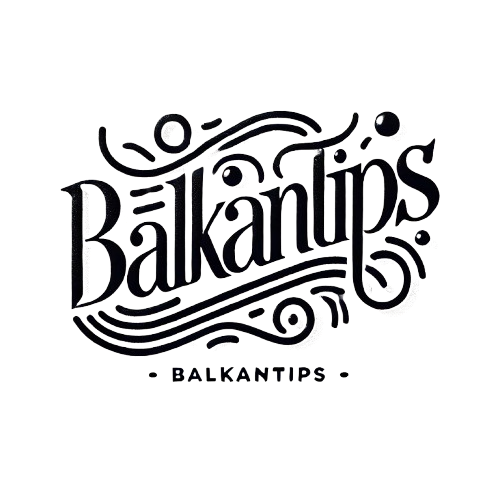

Discover the natural beauty, historic towns, and vibrant culture of Slovenia.
Slovenia, located in Central Europe, is a small yet remarkably diverse country with landscapes ranging from Mediterranean beaches to towering Alpine peaks. Known for its pristine nature, Slovenia is a pioneer in green tourism, with nearly 60% of its land covered in forest. The capital city, Ljubljana, is celebrated as one of Europe’s greenest cities, with a car-free center and innovative urban green spaces. Geography and Climate: Slovenia borders Italy, Austria, Hungary, and Croatia, giving it a unique blend of geographical and cultural diversity. The country experiences Mediterranean, Alpine, and continental climates, making it a year-round destination for activities like skiing, hiking, and water sports. Historical Background: The region that is now Slovenia has seen settlements since the Stone Age. Archaeological finds include the oldest wheel in the world, discovered near Ljubljana, and artifacts from ancient settlements along the Ljubljanica River. Early Civilizations and Roman Era: During the Roman Empire, Slovenia’s location was strategic for trade and defense. Roman cities like Emona (Ljubljana) became key centers of administration and culture, leaving behind ruins that are still visible today. Path to Independence: After centuries of foreign rule under the Habsburg Monarchy, Slovenia declared independence from Yugoslavia in 1991. Since then, it has developed into a modern, prosperous nation, joining NATO in 2004 and the European Union in 2004.
Slovenia’s culture reflects a harmonious blend of Slavic, Germanic, and Romance influences, contributing to its unique identity in the heart of Europe. Slovenians value nature and sustainability, evident in local traditions, customs, and celebrations. Folk Traditions: Slovenian folklore is celebrated with vibrant festivals and parades, especially during Carnival, known as “Pust.” Traditional masks, such as the Kurent (a furry demon-like figure), are worn to scare away winter. Dance and folk music, particularly the polka, remain popular and play a vital role in cultural festivities. Architecture: Slovenian architecture ranges from medieval castles and Baroque churches to modernist works by architect Jože Plečnik. Ljubljana’s city center, designed by Plečnik, is a UNESCO World Heritage site, showcasing his influence on urban architecture. Visual Arts and Literature: Slovenia has a strong artistic tradition, with contributions in painting, sculpture, and literature. Notable Slovenian writers include poet France Prešeren, whose work laid the foundation of Slovenian national identity. The annual Slovenian Book Fair and numerous literary festivals celebrate the country’s vibrant literary scene.
Slovenian cuisine is diverse and reflects the country’s landscapes, with influences from Italian, Austrian, and Hungarian culinary traditions. Local ingredients and traditional recipes are cherished, with a recent resurgence in organic farming and slow food movements.
Slovenia’s location made it a crossroads of trade and conquest throughout ancient and medieval history. The Roman period left lasting influences, with established roads, cities, and infrastructure that facilitated trade across the empire. Roman Influence: Emona (modern-day Ljubljana) was a significant Roman city, equipped with public baths, temples, and a forum. Archaeological excavations continue to reveal Roman artifacts, including mosaics and statues. Medieval Slovenia: After the fall of the Roman Empire, Slovenia came under Frankish rule and then the Holy Roman Empire. Many medieval castles, like Bled Castle and Predjama Castle, were built during this era and remain popular tourist attractions.
Habsburg Rule: Under Habsburg rule, Slovenia was integrated into the empire’s political and cultural life, with German becoming an important administrative language. This period saw a flourishing of arts, music, and education, with towns like Maribor and Celje becoming important centers of trade. Impact on National Identity: Despite foreign rule, Slovenian identity persisted, and a national awakening in the 19th century fueled a desire for autonomy. Intellectuals like France Prešeren used poetry to inspire Slovenian pride and foster a sense of cultural unity.
After World War I, Slovenia became part of the Kingdom of Serbs, Croats, and Slovenes, which later became Yugoslavia. During World War II, Slovenia was occupied by Nazi Germany and Fascist Italy, leading to a strong resistance movement. Post-War Yugoslavia: After WWII, Slovenia became one of Yugoslavia’s republics, experiencing economic growth and a relatively liberal regime under Tito. However, tensions with the Yugoslav government eventually led Slovenia to seek independence. Independence in 1991: Slovenia declared independence in 1991, leading to a brief Ten-Day War. Following this, Slovenia quickly established itself as a democratic nation and joined the European Union and NATO in 2004, marking its successful integration into the Western political and economic sphere.
Slovenian, part of the South Slavic language group, is unique among Slavic languages due to its preservation of the dual grammatical form, used when referring to pairs. The language is integral to Slovenian identity, and it reflects the country’s cultural history and regional diversity. Dialects: With over 40 dialects, Slovenian’s variety is remarkable for such a small country. Dialects vary significantly from region to region, with some so distinct that they are challenging for speakers of standard Slovenian to understand. Language Preservation: Slovenia is committed to preserving its language, with extensive language education in schools and promotion of Slovenian media. There is a significant body of literature in Slovenian, and local authors are celebrated for contributing to its literary heritage. Influence of Other Languages: Due to Slovenia’s position in Central Europe, many Slovenians are multilingual, often speaking English, German, or Italian. This linguistic diversity reflects Slovenia’s historical ties with neighboring countries and its openness to global influences.





